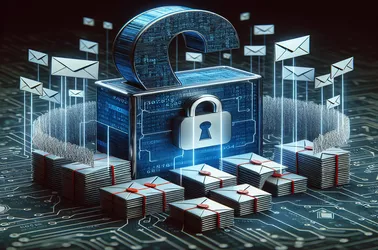A traditional encryption method that occasionally yields surprising outcomes when decrypted is the Caesar cipher. Spaces, for example, could become confused symbols like `{` or `t`. The problem is addressed in this article with solutions for managing unusual instances, optimized decryption techniques, and strong input validation. Python's string manipulation features facilitate debugging, as illustrated by real-world applications.
It can be challenging to handle encryption problems when using Crypto-JS, particularly following a library upgrade. Typical issues such as "malformed UTF-8" errors are frequently caused by incorrect encoding or mismatched encryption settings. Solutions to guarantee safe and compatible data handling between the frontend and backend are provided in this tutorial.
It can provide unanticipated obstacles to upgrade Crypto-JS in your React application, particularly when making sure it is compatible with a Java Spring Boot backend. This article demonstrates how irregular padding or incorrect encryption settings, including UTF-8 encoding, can cause problems with decryption. Find workable solutions to fix these issues while preserving reliable encryption processes.
There are difficulties when managing encrypted data in ASP.NET Core with Duende IdentityServer, particularly when it comes to security and data integrity. Techniques for processing and storing encrypted data safely are covered in this topic, with a focus on key management and avoiding data collisions in database fields.
Using PowerShell scripts to automate the delivery of encrypted messages through Outlook has its own set of difficulties, especially when it comes to filling in the body of an email with content from a template. Even if other email properties can be provided by the script, problems occur when the email content does not show as anticipated. The HTMLBody property must be changed, and proper handling of the Outlook application object and template files must be ensured.
Securing digital communications requires strong encryption procedures, especially when sensitive data is involved. This inquiry addresses the necessity of deploying end-to-end encryption and digital signatures to ensure the privacy and integrity of messages. It also highlights how data can be handled with homomorphic encryption without compromising confidentiality.
When using VBA scripts to automate secure communication via Excel and Outlook, difficulties such as 'Run-time error 5' become apparent. Inappropriate calls or arguments used within the script, particularly when handling encryption and digital signing functionalities, are frequently the source of this problem. Understanding and applying the PR_SECURITY_FLAGS property correctly is crucial for sending encrypted messages successfully.
Examining the application of Python and gnupg for encryption data demonstrates a sophisticated security strategy.
Protecting digital communication can be achieved strategically by implementing custom sensitivity labels in C#.








